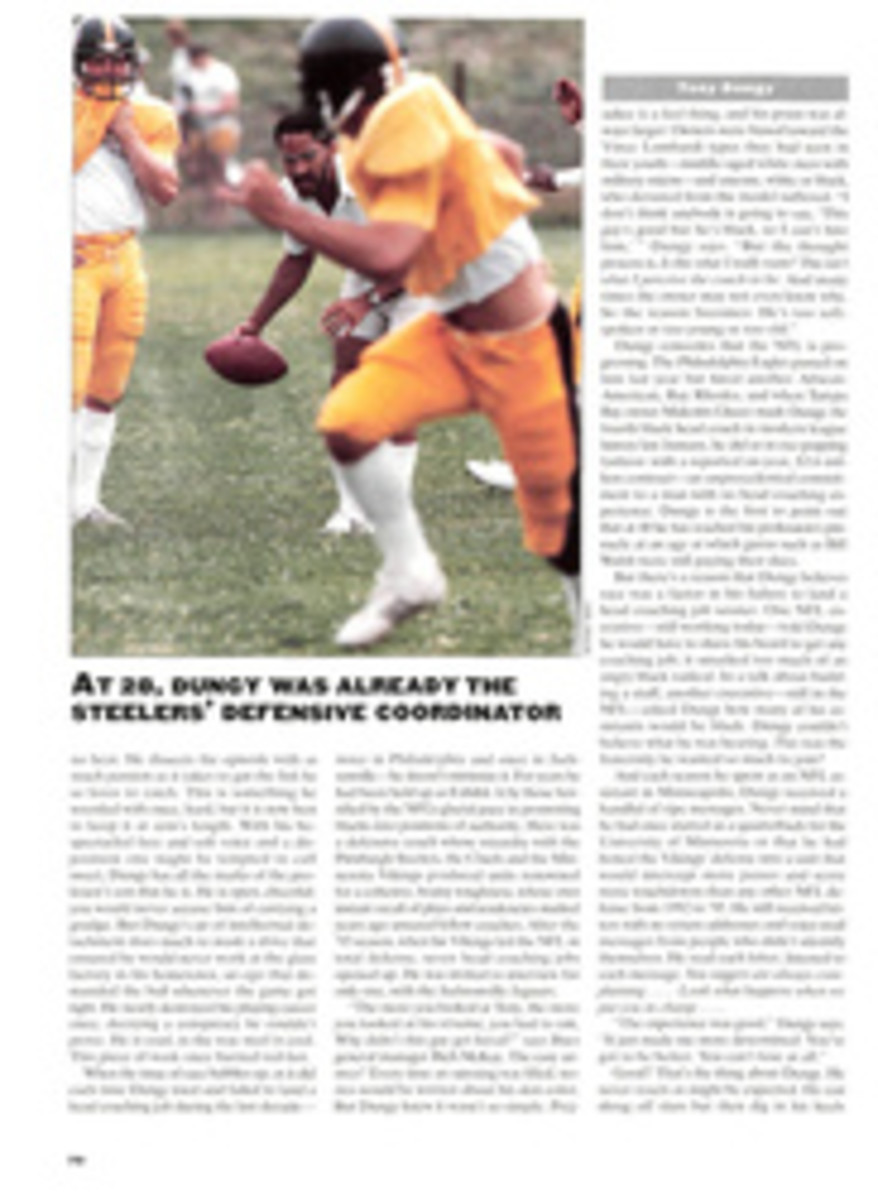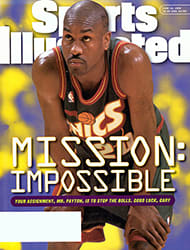
THE DUCK FAMILY WHEN IT COMES TO PAINTING WATERFOWL FOR STAMPS, THE HAUTMANS SOAR
Joe Hautman lives in New Jersey now, but he remains a Minnesotan
at heart: shy, outdoorsy, the kind of guy who might stipulate in
his will that he be buried in his Sunday suit and hip waders.
Joe likes to hunt ducks. Joe likes to cook and eat ducks. In
general, Joe's daffy about ducks. But his life didn't change
dramatically until he started painting ducks. In 1991, while he
was doing postdoctoral work in physics at the University of
Pennsylvania, he entered the fifth duck painting he had ever
done in the Federal Duck Stamp Contest--and beat 584 other
entrants. His winning acrylic depicted a snow-white-and-black
spectacled eider gliding over a dreamy, sunset-lit sea.
"It just opened up a door," Hautman, 39, says of his showing,
which prompted him to give up a promising future in science to
paint full time. In a way he joined the family business. His two
younger brothers, who never left the Minneapolis suburbs, are
professional painters. Jim, 32, has won the Federal Duck Stamp
Contest twice (the first time, in 1989, he was the youngest
person ever to take top honors). Bob, 37, has been a finalist
four times. The brothers also have won a total of 16 state duck
and pheasant stamp competitions. Jim even has an Australian duck
stamp to his credit. "The talent in that family is hard to
fathom," says Randy Eggenberger, president of Wild Wings, a
Minnesota-based art publisher that sells Hautman prints.
The Hautmans' mere participation is known to discourage some
people from entering the federal contest (pay close attention in
the current film Fargo and you'll catch a reference to that
effect). The winner of the 62-year-old event, now sponsored by
the Department of the Interior, has the official thrill of
seeing his creation turned into the next edition of the
hunting-permit stamp that some 1.5 million sportsmen across the
country must buy each year. (The $15 fee goes toward the
purchase of wetlands that are crucial to the well-being of ducks
and duck hunters.) The unofficial thrill is earning $500,000 and
up from subsequent print sales and commissions.
The Federal Duck Stamp Contest has helped create a
nature-oriented collectible niche that was once confined to
waterfowl art but now also encompasses paintings of mammals and
birds. Eggenberger refers to it as "average guy's art," and
average guys shell out $10,000 to $30,000 for top-quality
originals. They also tend to treat Duck Stamp Contest stars like
elite athletes. "What's weird," says Milla Hautman, Joe's wife,
"is that people want autographs."
The art cognoscenti certainly don't go gaga over beautifully
rendered mallards and mergansers. To them, nature art is to real
art what a duck call is to a Stan Getz sax solo. Yet Joe Hautman
insists that painting ducks is "way more complicated" than
anything he ever did in the physics lab. There's that
psychological link between artist and audience to forge; all
those elements of color and light to master; and anatomical
details to attend to. So how come the Hautmans seemingly took to
wildlife painting like, well, ducks to water?
Credit good breeding. Their late father was an avid duck hunter
and duck stamp collector. Tom Hautman inducted them into the
mystical fraternity of men who enjoy sitting in cramped duck
blinds for hours with numb behinds. Joe, Bob and Jim go hunting
together every October, trudging off to Manitoba in search of
fresh food and inspiration. "That's why most of my paintings are
set in the fall," explains Jim.
The Hautmans also keep mounted ducks at home to use as models.
Bob has a freezer full of dead fowl waiting to be pressed into
service. In Joe's studio are shoeboxes crammed with his wildlife
photos. When he was preparing to paint his spectacled eider, Joe
also traveled to Ottawa to peek at rare stuffed specimens in a
museum.
While Dad indirectly shaped their destiny, Mom had hands-on
influence. Elaine Hautman was a commercial artist before she
bore seven children. "That put her artwork on hold for about 40
years," says Bob, chuckling. But there were always crayons,
paint, paper and words of encouragement around the house.
"They've always painted over each other's shoulders," says Frank
Sisser, editor and publisher of U.S. ART magazine and a former
Federal Duck Stamp Contest judge. "They don't paint anything
without it passing muster with the other brothers." Such
teamwork is expected to pay off in three long, lucrative
painting careers. It also makes Bob an odds-on favorite to
eventually win the contest. Only a question of time. As a matter
of fact, notes Eggenberger, Bob came within a hair in 1994,
finishing in second place.
"The guy who won," Eggenberger adds, "just happened to be Jim
Hautman."
Freelancer Tom Dunkel, a regular contributor to SI, has never
ducked a challenging assignment.
COLOR ILLUSTRATION: COURTESY OF JOE HAUTMAN [Painting of duck]
COLOR PHOTO: JOHN IACONO Joe Hautman's eye for detail helped win him the stamp prize. [Joe Hautman drawing stuffed duck]
COLOR ILLUSTRATION: S.C. MIGRATORY WATERFOWL COMMITTEE [Painting of two ducks]

